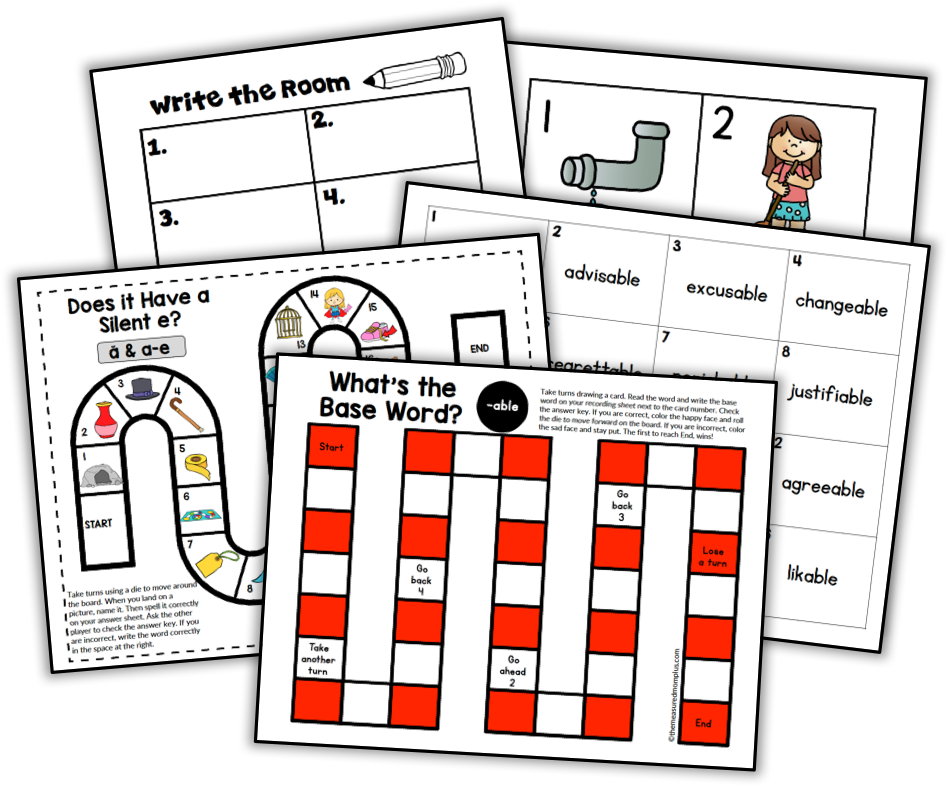Here are my top tips for teaching writing that every writing teacher should know.

Watch for an update to this post in 2023.

1. Students need a consistent routine.
Writing is complex, but the Writing Workshop itself is built on a solid structure that never changes. It is the routine of mini-lessons, independent writing, and sharing time that makes the workshop run smoothly.
Begin each workshop with a 5-10 minute mini-lesson. Reserve most of the workshop for students to write independently while you hold individual writing conferences. Conclude with a 5-10 minute sharing time. When you’re consistent, students will stop asking, “Are we writing today?” or “Do we have to write today?” They’ll even start to look forward to it!
2. Students need to write 3-5 days per week.
I’m guessing that you share a problem with every other teacher on the planet – your day is already full. If you can’t schedule a regular Writing Workshop, the next best thing must be to squeeze it in one day a week. After all, something is better than nothing right?
Actually, it’s not.
If you can only teach writing one day a week, skip it. Donald Graves, a leading pioneer in the teaching of writing, remarked that “one day a week will teach them to hate it. They’ll never get inside writing.”
We make time for what matters, whether that’s taking a shower every day or sitting down for lunch. When we believe that learning to write well is absolutely essential, we take a good hard look at our day and make time to teach it.
3. Students need to write for an extended period of time each day.
I remember the year that I tried to squeeze the entire workshop into a 30-minute period.
It didn’t go well.
Think about a long, heavy train and the work it takes to get that big machine and all its cars chugging along the tracks. Once the entire train is moving, it glides smoothly along the rails. But what if it had to stop after just fifteen minutes? It takes so much time to get the train started, it would hardly seem worth the effort to begin.
Kids need time to build and maintain their writing energy. I recommend at least 20-40 minutes of independent writing every day.

4. Students need to find their own writing topics.
I know it feels easier to put a prompt or sentence starter on the board, but giving students daily writing prompts is just like putting them in a box. They can only stretch so far!
5. Students need to move through the writing process at their own pace.

We’re all familiar with pre-writing, drafting, revising, editing, and publishing. We often expect our students to move through these stages in a linear fashion.
But have you ever thought about your own writing process? Writing isn’t orderly. It’s messy.
In the Writing Workshop, we support our students as they move in and out of the stages. We may set a general deadline for finishing a piece, but we don’t insist that every student is on the exact same timetable.
6. Writing is personal.
Have you ever been reluctant to share something you’ve written?
Writing is intensely personal. That’s why how you respond to a student’s writing matters so much.
Have you seen the Facebook meme, “Be careful. You never know when you’re creating a memory”? As a writing teacher you have the opportunity to bring confidence, create positive memories, and inspire dreams.
You also have the power to crush a child’s confidence with a single comment.
Does this scare you?
It doesn’t need to.
For now, remember to do three things: listen, smile and care.

7. Mentor texts are your best co-teachers.
The reason that many teachers and homeschoolers are afraid to teach writing is because they don’t know much about it. If they’re not confident writers themselves, how can they teach their students to excel at it?
I have good news.
Even if you’re the only adult in your classroom or homeschool, you’re not the only teacher. My guess is that you have at least a hundred co-teachers in the very same building.
They’re called books.
A mentor text is any text that can be used an example of good writing for writers. Does a child need help writing a strong lead? Find a book with a good beginning, and let its author be the teacher. Is a student’s writing dull? Find a book with good sensory images so your student can learn from the best
8.The writing teacher needs to focus on the writer, not the writing.
It’s really tempting to look at a piece of student writing, see all its flaws, and do everything you can to make the piece perfect. But if your student is simply making changes because of your suggestions, what have you accomplished? Your student may have a nice piece of writing, but will he write better tomorrow?
When I work with student writers, I often find myself getting caught up in the content of a particular piece. When I feel myself getting distracted from the big picture, I ask myself – “Is what I’m teaching going to help this student on his next piece of writing, too?”
9. Teaching writing isn’t supposed to be easy.
It’s okay that writing isn’t easy to teach. It’s not supposed to be! The reason that teaching writing is hard is because writing is hard.
Have you tried it lately?
I don’t mean dashing off an email or jotting down your grocery list. I’m talking about a term paper, a college essay, a work proposal, or a letter to the editor. Writing is a messy process that involves brainstorming, drafting, revising, re-writing and editing – and not necessarily in that order!
When we accept that teaching writing is challenging – and embrace that challenge – we stop second guessing ourselves and start enjoying the journey.
10. It’s worth it.
Yes, it’s hard work teaching kids to write well.
But it’s worth it.
It’s worth it when your students become invested in their writing and produce pieces you and they are proud of.
It’s worth it when they open up their hearts on paper.
It’s worth it when you find a reluctant writer boldly trying something new.
It’s worth it when your students learn to support and encourage each other during sharing time, and when that caring spills out of the Writing Workshop into other parts of your day.
It’s worth it when your conversations about writing lead to deep, personal connections with your students.
It’s worth it when you find that this way of teaching really works.





Taina
Anna, please look into Brave Writer Program I think you’d be fascinated by how Julie Bogart approaches writing.
Heather Groth, Customer Support
Thank you for the recommendation, Taina!
Writer
nice post
Jess
What a nice article! That’s very useful!
Anna G
Thank you, Jess!
Beth
Thank you Anna for the great article. I love the train analogy, so very true. I teach in a county that has invested in an expensive “pre-made” program that is full of consumable books with a technology component. Everything is very scripted. There are required writing pieces that we must do, but my kids love writing most when we are writing about something fun. I have recently noticed how far away we have gotten from the letting the kids make up their own stories. They really didn’t know how to do it, but I believe this is because we keep writing so regimented. I thought this was a shame because in the old days, we always wrote stories and plays and loved doing it. I am all for bringing back the joy of writing 🙂
Anna G
I am 100% with you, Beth! I’m so glad you’re finding a way to fit in authentic writing experiences with your students!
Holly B.
I truly enjoyed reading this post! I have heard all of these things before, but it is so nice to have it all in one place! I am so grateful for your tips and that you have a resource (again, in one place).
Anna Geiger
Yay – so happy to hear that this post was helpful for you Holly!
Nancy Lynn Barth
I love your new book. So nicely laid out and accessible.
Anna Geiger
Thank you so much, Nancy! I always appreciate your feedback.